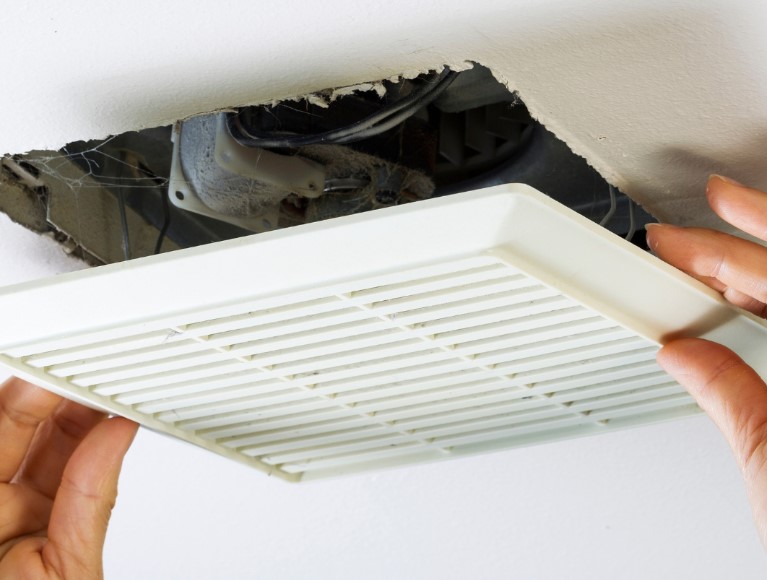When it comes to residential roofing, most homeowners focus on the shingles, gutters, and overall appearance of their roof. However, one crucial aspect of roofing that often goes overlooked is attic ventilation.
Attic ventilation plays a significant role in the overall health and longevity of your roof. In this article, we’ll explore the importance of attic ventilation in residential roofing and how it can improve energy efficiency and prevent moisture damage.
What is Attic Ventilation?
Attic ventilation is the process of allowing air to flow in and out of your attic space. This is typically achieved through the use of vents, which are strategically placed in the roof to allow for proper air circulation.
How Does Attic Ventilation Work?
During the summer, the sun’s rays can heat your roof, causing the temperature in your attic to rise. Without proper ventilation, this hot air can become trapped in your attic, leading to a buildup of moisture and heat. This can cause damage to your roof and lead to higher energy bills as your air conditioning system works harder to cool your home.
In the winter, warm air from your home can rise into the attic, where it can come into contact with the cold roof. This can cause condensation to form, leading to moisture buildup and potential damage to your roof and insulation.
Proper attic ventilation allows for the hot air to escape in the summer and the warm air to circulate in the winter, creating a balanced and healthy environment for your roof.
The Benefits of Attic Ventilation
Improved Energy Efficiency
One of the most significant benefits of attic ventilation is improved energy efficiency. By allowing hot air to escape in the summer, your attic stays cooler, reducing the strain on your air conditioning system. This can lead to lower energy bills and a more comfortable living environment.
In the winter, proper ventilation allows for warm air to circulate, reducing the risk of condensation and moisture buildup. This can help prevent damage to your roof and insulation, leading to potential savings on repairs and replacements.
Prevents Moisture Damage
Moisture buildup in your attic can lead to a host of problems, including mold growth, rotting wood, and damage to your insulation. Proper attic ventilation helps to prevent this by allowing for proper air circulation and reducing the risk of condensation.
By keeping your attic dry, you can avoid costly repairs and replacements and maintain the structural integrity of your roof.
Extends the Life of Your Roof
By reducing the risk of moisture damage and maintaining a balanced temperature in your attic, proper ventilation can help extend the life of your roof. This can save you money in the long run by avoiding premature roof replacements.
Signs of Poor Attic Ventilation
High Energy Bills
If you’ve noticed a significant increase in your energy bills, it could be a sign of poor attic ventilation. Without proper ventilation, your air conditioning system has to work harder to cool your home, leading to higher energy consumption.
Mold Growth
Mold thrives in moist environments, making your attic a prime location for growth if there is poor ventilation. If you notice mold growth in your attic, it could be a sign that your ventilation system is not functioning correctly.
Ice Dams
In the winter, warm air from your home can rise into your attic and come into contact with the cold roof. This can cause ice dams to form, which can lead to water damage and potential leaks. Proper ventilation can help prevent ice dams from forming and protect your roof from damage.
How to Improve Attic Ventilation
Install Vents
The most common way to improve attic ventilation is by installing vents on your roof. These vents allow for air to flow in and out of your attic, creating a balanced and healthy environment.
There are several types of vents available, including ridge vents, soffit vents, and gable vents. A roofing contractor can help you determine the best type of vent for your home and install them properly.
Check for Obstructions
Before installing vents, it’s essential to check for any obstructions in your attic, such as insulation or debris. These obstructions can block the flow of air and prevent proper ventilation. Clearing these obstructions can help improve the effectiveness of your ventilation system.
Consider a Roof Replacement
If your roof is old or damaged, it may be time for a replacement. A new roof can provide an opportunity to improve attic ventilation by installing new vents and ensuring proper airflow.
The Role of Roofing Contractors in Attic Ventilation
When it comes to attic ventilation, it’s essential to work with a reputable roofing contractor. They have the knowledge and experience to assess your current ventilation system and make recommendations for improvement.
A roofing contractor can also ensure that vents are installed correctly and that there are no obstructions in your attic that could hinder proper ventilation.
Conclusion
Attic ventilation is a crucial aspect of residential roofing. It plays a significant role in improving energy efficiency, preventing moisture damage, and extending the life of your roof.
If you suspect that your attic ventilation is not functioning correctly, it’s essential to consult with a roofing contractor. They can help you determine the best course of action to improve your ventilation system and protect the health and longevity of your roof.








